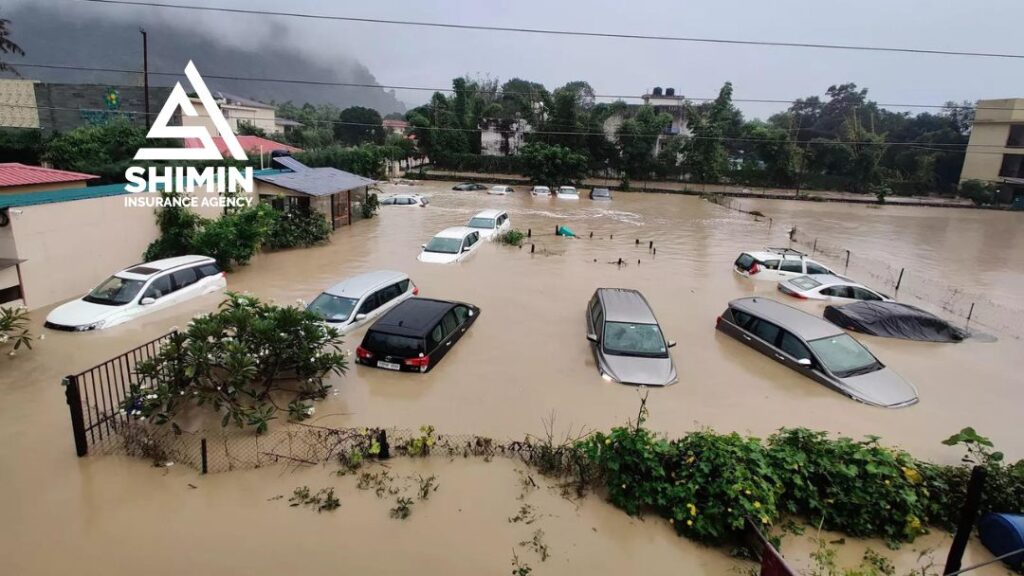
Disaster-Proof Your Life: An In-Depth Look at Natural Disaster Insurance Coverage

Natural disasters, while unpredictable, can wreak havoc on our lives. From hurricanes and earthquakes to wildfires and floods, these events can leave a trail of destruction in their wake. While we cannot control when or where disasters strike, we can take proactive steps to safeguard our homes, possessions, and loved ones. In this in-depth article, we will delve into natural disaster insurance coverage and provide you with the knowledge and tools to disaster-proof your life.
Understanding the Basics
What Is Natural Disaster Insurance?
Natural disaster insurance, often referred to as catastrophe insurance, is a type of coverage that helps protect individuals and businesses from the financial repercussions of natural disasters. This insurance can provide financial support for repairing or rebuilding the damaged property, replacing lost belongings, and covering additional living expenses during the recovery period.
Why Do You Need It?
Protecting Your Assets
Natural disasters can result in significant property damage or loss. Without insurance, the financial burden of repairing or replacing your assets can be overwhelming. Natural disaster insurance offers peace of mind by ensuring that you won’t be financially devastated in the event of a catastrophe.
Ensuring Your Family’s Well-Being
In times of disaster, your home may become uninhabitable. Natural disaster insurance often includes coverage for temporary living arrangements, ensuring that you and your family have a safe place to stay while your home is being repaired or rebuilt.
Types of Natural Disaster Insurance
Homeowners Insurance
Most standard homeowners insurance policies include coverage for some natural disasters, such as wildfires and windstorms. However, it’s crucial to review your policy to ensure you have adequate protection. Some disasters, like earthquakes and floods, typically require separate insurance policies.
Earthquake Insurance
Living in earthquake-prone areas makes earthquake insurance a wise investment. This specialized coverage can help repair or rebuild your home and replace damaged belongings in the aftermath of a seismic event.
Flood Insurance
Floods can happen anywhere, not just in high-risk flood zones. A separate flood insurance policy is essential to protect against the devastating effects of flooding, as standard homeowners insurance does not cover this peril.
Assessing Your Coverage Needs
Conducting a Risk Assessment
Before selecting a natural disaster insurance policy, it’s essential to assess the specific risks in your region. This assessment will help you determine the types of coverage you need and the appropriate coverage limits.
Factors to Consider
Geographic Location
The location of your home dramatically influences your risk of various natural disasters. Coastal regions may face hurricane threats, while areas near fault lines are more susceptible to earthquakes.
Building Materials
The materials used to construct your home can impact its resilience to disasters. Older homes may require additional coverage for retrofitting to meet modern safety standards.
Disaster-Proof Your Life: An In-Depth Look at Natural Disaster Insurance Coverage
When disaster strikes, having the right insurance coverage can make all the difference. Here’s a closer look at some essential aspects of natural disaster insurance to help you make informed decisions.
Policy Limits and Deductibles
Understanding Policy Limits
Every insurance policy has coverage limits, which represent the maximum amount the insurer will pay out in the event of a claim. It’s crucial to review these limits to ensure they align with the potential costs of rebuilding your property and replacing your belongings.
Deductibles Matter
Deductibles are the out-of-pocket expenses you must cover before your insurance policy kicks in. Higher deductibles often result in lower premiums, but it’s essential to strike a balance that suits your budget and risk tolerance.
Mitigation Measures
Home Improvements
Investing in home improvements, such as reinforcing the roof, installing impact-resistant windows, and securing the foundation, can reduce your risk and may lead to lower insurance premiums.
Emergency Preparedness
Being prepared for a disaster is crucial. Create an emergency kit, develop a family evacuation plan, and stay informed about local emergency alerts to ensure safety.
Conclusion
Disaster-proofing your life through natural disaster insurance coverage is a wise decision that offers protection and peace of mind. By understanding your risks, assessing your coverage needs, and taking mitigation measures, you can ensure that you and your loved ones are well-prepared for the unexpected. Remember that being proactive today can make all the difference tomorrow.
About Us
Shimin Insurance Agency is licensed to carry out insurance business as an intermediary and has its headquarters at Co-op House along Haile Selassie Street, Nairobi. Through establishing partnerships with various reputable insurance companies in the industry, the Agency has developed a full banquet of innovative insurance products and services that address the insurable needs of our customers and offers these services from across our branches in Kenya.
Our Products
- Insurance Premium Financing
- Motor Vehicle Insurance
- Agriculture Insurance
- Student Accident Cover
- Group Personal Accident
- Domestic Package
- Public Liability
- Product Liability
- Directors Liability
- Professional Indemnity
- Machinery Breakdown
- Fire and Special perils
- Travel Insurance
- Marine Insurance
- Medical Insurance
- Trade Insurance
















